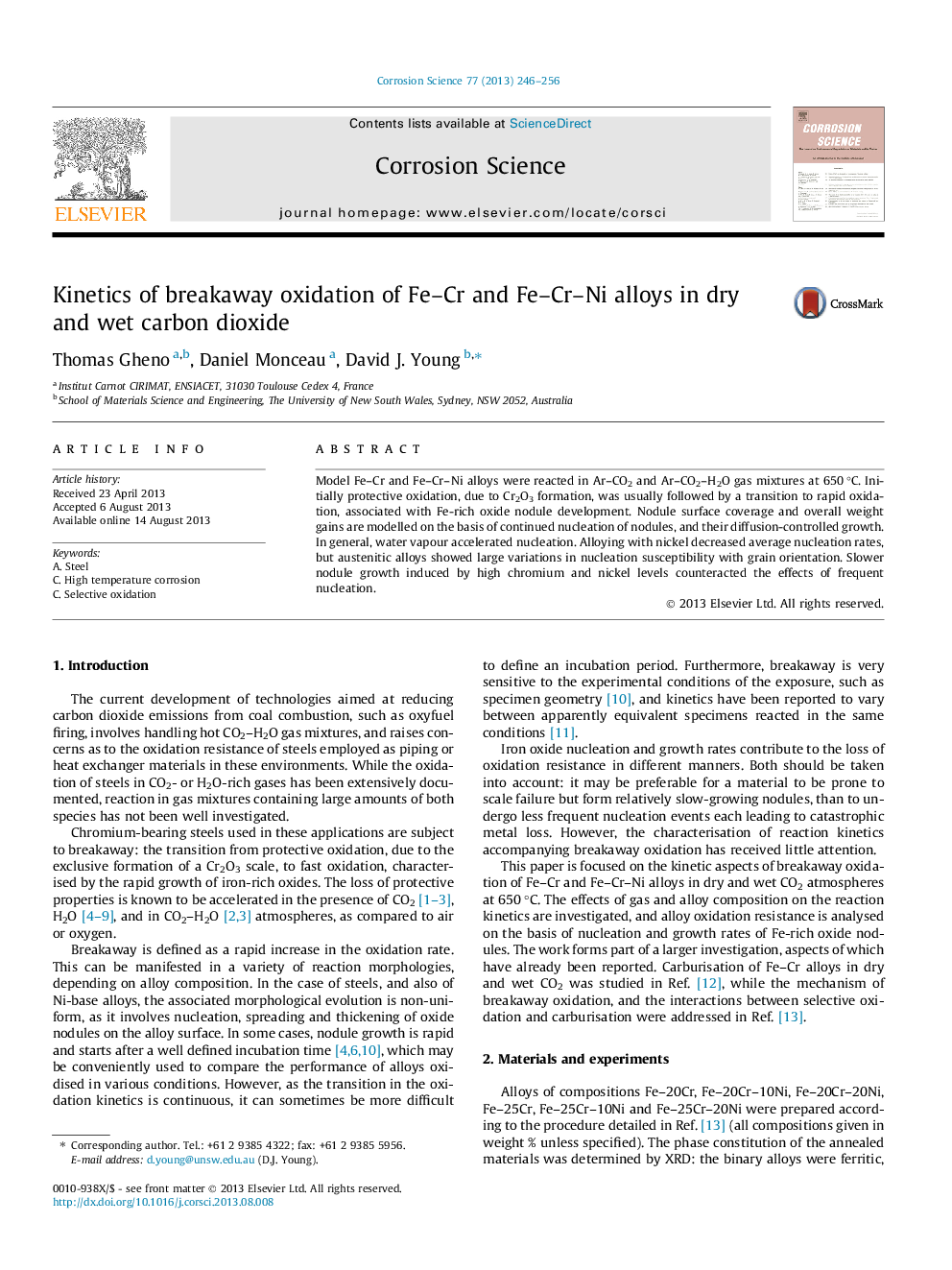| Article ID | Journal | Published Year | Pages | File Type |
|---|---|---|---|---|
| 7896249 | Corrosion Science | 2013 | 11 Pages |
Abstract
Model Fe-Cr and Fe-Cr-Ni alloys were reacted in Ar-CO2 and Ar-CO2-H2O gas mixtures at 650 °C. Initially protective oxidation, due to Cr2O3 formation, was usually followed by a transition to rapid oxidation, associated with Fe-rich oxide nodule development. Nodule surface coverage and overall weight gains are modelled on the basis of continued nucleation of nodules, and their diffusion-controlled growth. In general, water vapour accelerated nucleation. Alloying with nickel decreased average nucleation rates, but austenitic alloys showed large variations in nucleation susceptibility with grain orientation. Slower nodule growth induced by high chromium and nickel levels counteracted the effects of frequent nucleation.
Related Topics
Physical Sciences and Engineering
Materials Science
Ceramics and Composites
Authors
Thomas Gheno, Daniel Monceau, David J. Young,
